 W
WThe Netherlands, as a nation-state, dates to 1568, when the Dutch Revolt created the Dutch Empire. Previously, the Germanic tribes had no written language during the ancient and early medieval periods, so what we know about their early military history comes from accounts written in Latin and from archaeology. This causes significant gaps in the historic timeline. Germanic wars against the Romans are fairly well documented from the Roman perspective; however, Germanic wars against the early Celts remain mysterious because neither side recorded the events. Wars between the Germanic tribes in Northern Belgium and the present day Netherlands, and various Celtic tribes that bordered their lands, are likely due to their geographical proximity.
 W
WThe 1st Infantry Battalion of the Royal Netherlands East Indies Army was a Dutch colonial military unit that was active in the Dutch East Indies during World War II and the Indonesian National Revolution.
 W
W2e Afdeling, Vliegtuiggroep V or short 2-VLG-V was a squadron of the Royal Netherlands East Indies Army Air Force from the 1st of July 1941 to the 8th of March 1942.
 W
WThe affair of Fielding and Bylandt was a brief naval engagement off the Isle of Wight on 31 December 1779 between a Royal Navy squadron, commanded by Commodore Charles Fielding, and a naval squadron of the Dutch Republic, commanded by rear-admiral Lodewijk van Bylandt, escorting a Dutch convoy. The Dutch and British were not yet at war, but the British wished to inspect the Dutch merchantmen for what they considered contraband destined for France, then engaged in the American War of Independence. Bylandt attempted to avoid the engagement by offering the ships' manifests, but when Fielding insisted on a physical inspection, Bylandt put up a brief show of force, before striking his colours. The British then seized the Dutch merchantmen and conducted them as prizes to Portsmouth, followed by the Dutch squadron. The incident worsened the diplomatic relations between Great Britain and the Dutch Republic almost to breaking point. It also contributed to the formation of the First League of Armed Neutrality to which the Dutch acceded in December, 1780. To prevent their receiving assistance from other members of that League, Britain declared the Fourth Anglo-Dutch War shortly afterwards.
 W
WThe Battle of Ane, was fought in 1227 between Otto II of Lippe, Bishop of Utrecht, and Rudolf II van Coevorden with his army of Drenths. The account of the battle comes from Quedam narracio de Groninghe de Trentis de Covordia et diversis aliis sub episcopis traiectensibus, a manuscript from the early 13th century.
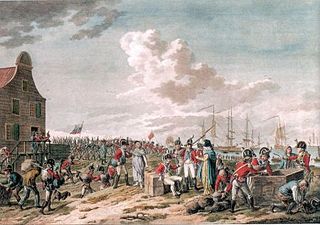 W
WThe Anglo-Russian invasion of Holland was a military campaign from 27 August to 19 November 1799 during the War of the Second Coalition, in which an expeditionary force of British and Russian troops invaded the North Holland peninsula in the Batavian Republic. The campaign had two strategic objectives: to neutralize the Batavian fleet and to promote an uprising by followers of the former stadtholder William V against the Batavian government. The invasion was opposed by a slightly smaller joint Franco-Batavian army. Tactically, the Anglo-Russian forces were successful initially, defeating the defenders in the battles of Callantsoog and the Krabbendam, but subsequent battles went against the Anglo-Russian forces. Following a defeat at Castricum, the Duke of York, the British supreme commander, decided upon a strategic retreat to the original bridgehead in the extreme north of the peninsula. Subsequently, an agreement was negotiated with the supreme commander of the Franco-Batavian forces, General Guillaume Marie Anne Brune, that allowed the Anglo-Russian forces to evacuate this bridgehead unmolested. However, the expedition partly succeeded in its first objective, capturing a significant proportion of the Batavian fleet.
 W
WThe Batavian Legion was a unit of Dutch volunteers under French command, created and dissolved in 1793.
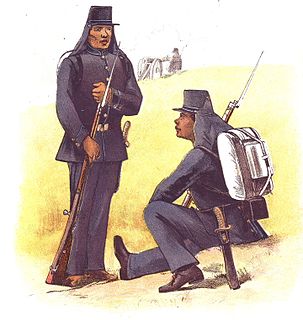 W
WBelanda Hitam were a group of African recruits in the Royal Netherlands East Indies Army during the colonial period.
 W
WThe Colonial Reserve Corps was an arm of the Royal Netherlands East Indies Army and an important recruitment depot. The Corps existed from 1890 to 1951 and was located in the Prins Hendrikbarracks in Nijmegen.
 W
WThe Corps of Israelites was a short-lived military unit of the Kingdom of Holland recruited solely from the Jewish population. King Louis Bonaparte, who strongly supported Jewish emancipation, proposed to raise the unit as part of his efforts to improve the equality of Jews in his kingdom. Until the Batavian Revolution of 1795, Jews had traditionally been excluded from most professions, including military service.
 W
W W
WThe Dutch Brigade was a unit of the Royal Army of the Kingdom of Holland. It was sent out in September 1808, by King Louis Bonaparte at the request of his brother Emperor Napoleon of France, to take part in the Peninsular War on the French side. The brigade, under the command of Major-General David Hendrik Chassé, was made part of the so-called "German Division". The Division also consisted of units from the Nassau, the Baden and other German allies of the French empire under command of the French general Leval. It was, in turn, part of the IVth French Corps under command of Marshals Lefebvre and Sébastiani, and was later part of the Ist Corps of Marshal Victor. The brigade distinguished itself initially in several major battles, and was later employed mainly in counter-guerrilla warfare. After the annexation of the Kingdom of Holland by the French empire in 1810, the brigade was formally decommissioned and its personnel, now French subjects, absorbed into the French 123rd Line Infantry Regiment, and later into the 130th Line Infantry Regiment, the other battalions of the 123rd back home being reassigned to the Russian campaign of 1812.
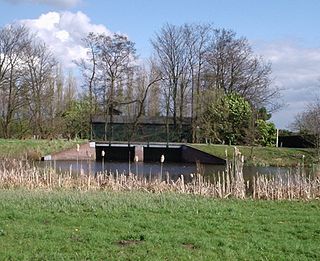 W
WThe Dutch Water Line was a series of water-based defences conceived by Maurice of Nassau in the early 17th century, and realised by his half brother Frederick Henry. Combined with natural bodies of water, the Water Line could be used to transform Holland almost into an island. In the 19th century, the Line was extended to include Utrecht.
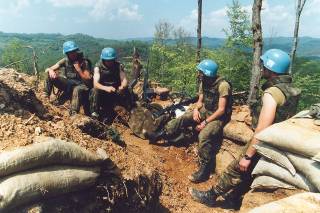 W
WDutchbat was a Dutch battalion under the command of the United Nations in operation United Nations Protection Force (UNPROFOR). It was hastily formed out of the emerging Air Mobile Brigade of the Royal Netherlands Armed Forces between February 1994 and November 1995 to participate in peacekeeping operations in the former Yugoslavia. It was tasked to execute United Nations Security Council Resolution 819 in the Bosniak Muslim enclaves and the designated UN "safe zone" of Srebrenica during the Bosnian War.
 W
WAn exercitiegenootschap or militia was a military organisation in the 18th century Netherlands, in the form of an armed private organization with a democratically chosen administration, aiming to train the citizens and the lower bourgeoisie in use of muskets. Exercitiegenootschappen were propagated by Joan van der Capellen tot den Pol, who translated an old book (1732) by Andrew Fletcher on arming a nation's citizens and so got the idea from Scotland. He also saw them as necessary due to the serious decline in the existing, Orangist schutterijen.
 W
WThe First Sumatran expedition, which featured the Battle of Quallah Battoo in 1832, was a punitive expedition by the United States Navy against the village of Kuala Batee, presently a subdistrict in Southwest Aceh Regency. The reprisal was in response to the massacre of the crew of the merchantman Friendship a year earlier. The frigate Potomac and its crew defeated the local uleëbalang (ruler)'s forces and bombed the settlement. The expedition was successful in stopping Sumatran attacks on U.S. shipping for six years until another vessel was plundered under different circumstances, resulting in a second Sumatran expedition in 1838.
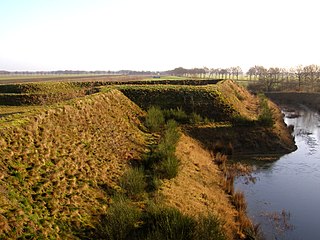 W
WThe building of the Friese Waterlinie started around 1580. The traject of the defenceline starts at the Zuidersea, along the river Linde until the De Blessebridge. Then the defence line goes to the north to Kuinre along Heerenveen, Terband, Gorredijk, Donkerbroek, Bakkeveen until Frieschepalen.
 W
WThe Grebbe Line was a forward defence line of the Dutch Water Line, based on inundation. The Grebbe Line ran from the Grebbeberg in Rhenen northwards until the IJsselmeer.
 W
WThe Hook and Cod wars comprise a series of wars and battles in the County of Holland between 1350 and 1490. Most of these wars were fought over the title of count of Holland, but some have argued that the underlying reason was because of the power struggle of the bourgeois in the cities against the ruling nobility.
 W
WThe Indies Brigade or Indian Brigade, also referred to as the Dutch Indies Brigade or Netherlands Indies Brigade, was a short-lived Dutch-Belgian military unit which took part in the Waterloo Campaign and subsequent invasion of France in 1815.
 W
WThe Inundation of Walcheren was the intentional, but uncontrolled military inundation, effected by bombing the sea dikes of the former island of Walcheren in Zeeland by the Allies on and after 3 October 1944 in the context of Operation Infatuate during the Battle of the Scheldt after the Allied Invasion of Normandy during World War II. Though the inundation was justified by military necessity, it is controversial whether it was proportional in view of the predictable devastating effects for the civilian population, and the ecology of the island. The fact that the breaches in the sea dikes of the island remained open for a very long time, subjecting the island to the full impact of the twice-daily tides, caused severe damage to agricultural land and infrastructure, and severe hardship for the civilian population. Leaving the breaches open for such a long time, which was unavoidable due to the war-time lack of resources making closing impossible, subjected them to scouring by the tides, that widened and deepened them to such an extent that closing them eventually became extremely difficult, necessitating the development of new dike-building techniques, such as the use of caissons. The last breach was closed on 23 October 1945 and the draining of the island took until early 1946. Only after that could rebuilding the infrastructure and reconstructing the housing stock and the island's economy start. Walcheren was spared during the North Sea Flood of 1953 that devastated many other parts of Zeeland.
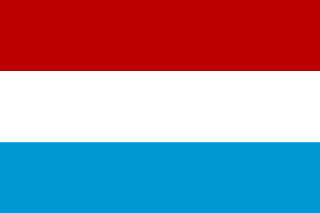 W
WThe King's Dutch Brigade was a brigade of the British army, organised by the Hereditary Prince of Orange out of former officers and lower ranks of the former Dutch States Army, deserters from the Batavian army, and mutineers from the Batavian fleet that had surrendered to the Royal Navy in the Vlieter Incident during the Anglo-Russian invasion of Holland in 1799, but fully in British service and paid for by the British government. It was commissioned on 21 October 1799 and was initially in garrison on the Isle of Wight and in Lymington. It saw service in Ireland in 1801, and afterwards back to the Isle of Wight and Lymington as well as to the Channel Islands of Jersey and Guernsey. The orders for the brigade to be disbanded were issued on 12 July 1802, as agreed in the Treaty of Amiens of 25 March 1802.
 W
WAlthough the Netherlands does not have weapons of mass destruction made by itself, the country participates in the NATO nuclear weapons sharing arrangements and trains for delivering United States nuclear weapons.
 W
WThe Peel-Raam Line was a Dutch defense line built in 1939 and attacked and conquered on 10 May 1940 by the German forces.
 W
WThe Prins Hendrik Barracks are former barracks in the Netherlands city Nijmegen.
 W
WThe Royal Netherlands East Indies Army was the military force maintained by the Netherlands in its colony of the Netherlands East Indies, in areas that are now part of Indonesia. The KNIL's air arm was the Royal Netherlands East Indies Army Air Force. Elements of the Royal Netherlands Navy were also stationed in the Netherlands East Indies.
 W
WThe Royal Netherlands East Indies Army Air Force was the air arm of the Royal Netherlands East Indies Army in the Dutch East Indies from 1939 until 1950. It was an entirely separate organisation from the Royal Netherlands Air Force.
 W
WRudolph van Coevorden was a feudal lord of the Drenthe who led a rebellion against Otto II, Bishop of Utrecht. He defeated and killed Otto at the Battle of Ane in 1228. Otto's successor, Wilbrand, initiated a crusade against the Drenthers. During a truce in 1230, Rudolph was arrested at a meeting in Hardenberg and executed.
 W
WSchutterij refers to a voluntary city guard or citizen militia in the medieval and early modern Netherlands, intended to protect the town or city from attack and act in case of revolt or fire. Their training grounds were often on open spaces within the city, near the city walls, but, when the weather did not allow, inside a church. They are mostly grouped according to their district and to the weapon that they used: bow, crossbow or gun. Together, its members are called a Schuttersgilde, which could be roughly translated as a "shooter's guild". It is now a title applied to ceremonial shooting clubs and to the country's Olympic rifle team.
 W
WThe second Sumatran expedition was a punitive expedition by the United States Navy against inhabitants of the island of Sumatra. After Malay warriors or pirates had massacred the crew of the American merchant ship Eclipse, an expedition of two American warships landed a force that defeated the Malays in two short engagements.
 W
WThe Treaty of Venlo of 7 September 1543 concluded the Guelders Wars (1502–1543), and the definitive acquisition of the Duchy of Guelders and the adjoining County of Zutphen by the House of Habsburg, adding them to the Habsburg Netherlands. William V, Duke of the United Duchies of Jülich-Cleves-Berg had to relinquish his claims to Guelders and Zutphen in favour of the Holy Roman Emperor and King of Spain, Charles V of Habsburg.
 W
WThe Utrecht Schism was a diocesan feud in the Prince-Bishopric of Utrecht from 1423 to 1449. The legitimate prince-bishop of Utrecht was at issue. The war of succession was fought by Zweder van Culemborg and his brother Walraven van Meurs against Rudolf van Diepholt. The conflict mixed with the existing Utrecht factionalism between the Lichtenbergers and Lokhorsten and with the Hook and Cod wars raging in the County of Holland. Some scholars consider the Utrecht Schism to have ended in 1429.